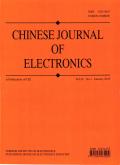Fake Face Detection Based on Fusion of Spatial Texture and High-Frequency Noise
IF 1.6
4区 计算机科学
Q3 ENGINEERING, ELECTRICAL & ELECTRONIC
引用次数: 0
Abstract
The rapid development of the Internet has led to the widespread dissemination of manipulated facial images, significantly impacting people's daily lives. With the continuous advancement of Deepfake technology, the generated counterfeit facial images have become increasingly challenging to distinguish. There is an urgent need for a more robust and convincing detection method. Current detection methods mainly operate in the spatial domain and transform the spatial domain into other domains for analysis. With the emergence of transformers, some researchers have also combined traditional convolutional networks with transformers for detection. This paper explores the artifacts left by Deepfakes in various domains and, based on this exploration, proposes a detection method that utilizes the steganalysis rich model to extract high-frequency noise to complement spatial features. We have designed two main modules to fully leverage the interaction between these two aspects based on traditional convolutional neural networks. The first is the multi-scale mixed feature attention module, which introduces artifacts from high-frequency noise into spatial textures, thereby enhancing the model's learning of spatial texture features. The second is the multiscale channel attention module, which reduces the impact of background noise by weighting the features. Our proposed method was experimentally evaluated on mainstream datasets, and a significant amount of experimental results demonstrate the effectiveness of our approach in detecting Deepfake forged faces, outperforming the majority of existing methods.基于空间纹理和高频噪声融合的假人脸检测
互联网的快速发展导致了人脸图像的广泛传播,极大地影响了人们的日常生活。随着Deepfake技术的不断进步,生成的伪造人脸图像越来越难以识别。迫切需要一种更稳健、更有说服力的检测方法。目前的检测方法主要是在空间域中进行操作,将空间域转化为其他域进行分析。随着变压器的出现,一些研究者也将传统的卷积网络与变压器结合起来进行检测。本文探讨了深度伪造在各个领域留下的伪迹,并在此基础上提出了一种利用隐写分析丰富模型提取高频噪声来补充空间特征的检测方法。在传统卷积神经网络的基础上,我们设计了两个主要模块来充分利用这两个方面之间的相互作用。首先是多尺度混合特征关注模块,将高频噪声中的伪像引入到空间纹理中,增强模型对空间纹理特征的学习能力。二是多尺度通道注意模块,该模块通过加权特征来降低背景噪声的影响。我们提出的方法在主流数据集上进行了实验评估,大量的实验结果证明了我们的方法在检测Deepfake伪造人脸方面的有效性,优于大多数现有方法。
本文章由计算机程序翻译,如有差异,请以英文原文为准。
求助全文
约1分钟内获得全文
求助全文
来源期刊

Chinese Journal of Electronics
工程技术-工程:电子与电气
CiteScore
3.70
自引率
16.70%
发文量
342
审稿时长
12.0 months
期刊介绍:
CJE focuses on the emerging fields of electronics, publishing innovative and transformative research papers. Most of the papers published in CJE are from universities and research institutes, presenting their innovative research results. Both theoretical and practical contributions are encouraged, and original research papers reporting novel solutions to the hot topics in electronics are strongly recommended.
 求助内容:
求助内容: 应助结果提醒方式:
应助结果提醒方式:


